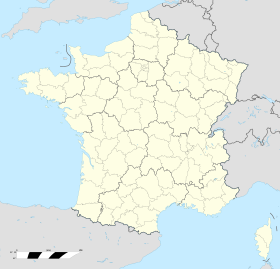Ouvrage Hochwald
| Ouvrage Hochwald | |
|---|---|
| Part of Maginot Line | |
| Northeast France | |

Block 6
|
|
| Coordinates | 48°59′04″N 7°50′01″E / 48.9845°N 7.8337°E |
| Type | Gros Ouvrage |
| Site information | |
| Controlled by | France |
| Open to the public |
No |
| Condition | In use by French Air Force |
| Site history | |
| Built | 1929-1933 |
| Built by | CORF |
| Materials | Concrete, steel, deep excavation |
| Battles/wars | Battle of France, Lorraine Campaign |
| Garrison information | |
| Garrison | 1070 |
| Ouvrage Hochwald | |
|---|---|
| Type of work: | Large artillery work (Gros ouvrage) |
|
sector └─sub-sector |
Fortified Sector of Haguenau └─Péchelbronn |
| Work number: | E 700, Ouvrage F |
| Regiment: | 22nd Fortress Infantry Regiment (RIF) + 156thPosition Artillery Regiment (RAP) |
| Number of blocks: | 14 |
Ouvrage Hochwald is a gros ouvrage of the Maginot Line, one of the largest fortifications in the Line. Located on the Hochwald ridge in the Fortified Sector of Haguenau in the community of Drachenbronn-Birlenbach in the Bas-Rhin department of northeastern France, it was designed to protect the northern Vosges region of France. Ouvrage Hochwald is sometimes considered as two ouvrages because of its separation of the western and the eastern portions of the ouvrage. Uniquely, the original plans for the position included an elevated battery to the rear with long-range 145 mm or 155 mm gun turrets of a new kind. Hochwald is used by the French Air Force as an armoured air defense coordination center.
The Hochwald site was surveyed by CORF (Commission d'Organisation des Régions Fortifiées), the Maginot Line's design and construction agency, in 1928. Work began the next year, and the position became operational in 1933. The gros ouvrage is unique in size and extent. The reduit at the peak of the Hochwald would have provided heavy, long-range artillery cover for the entire sector.
Hochwald is flanked on the west by Ouvrage Four-à-Chaux and on the east by Ouvrage Schoenenbourg, comprising one of the strongest points on the Line. The height of the Hochwald ridge overlooks the area of Wissembourg to the east, which forms a gap between the hills of the northern Vosges and the Palatinate forest on the west and the Bienwald on the east. The landscape on the French side of the border is an open farmed plain for 24 kilometres (15 mi) eastwards to the Rhine. The ouvrage formed part of the "principal line of resistance", an element of defense in depth that was preceded by line of advance posts close to the border and backed by a line of shelters for infantry. Hochwald's fighting elements were placed in the line of resistance, with the entrances and their associated supply lines protected by infantry in the third line, 1-kilometre (0.62 mi) or more to the rear. The entrances were served by narrow-gauge 60-centimetre (24 in) railways, that branched from a line paralleling the front and connecting to supply depots. The rail lines ran directly into the munitions entry of the ouvrage and all the way out to the combat blocks, a distance of nearly 2,000 metres (6,600 ft).
...
Wikipedia

